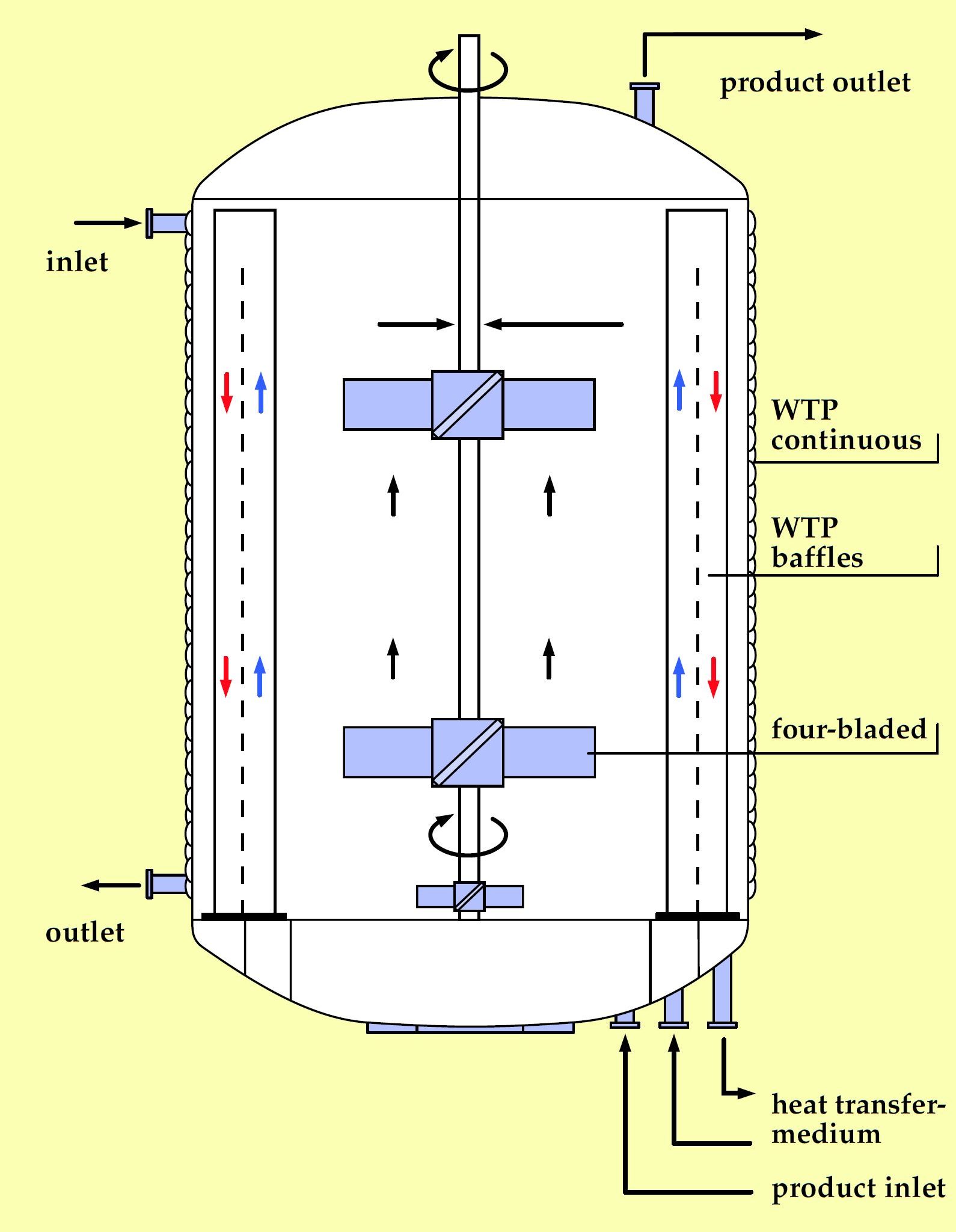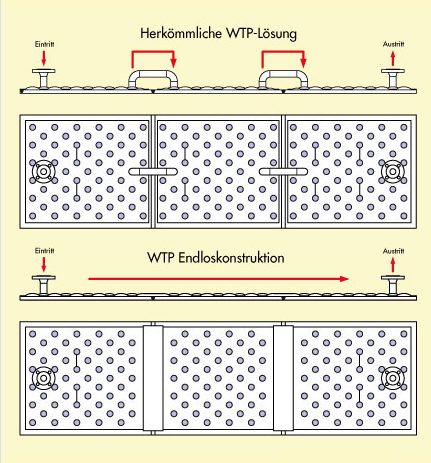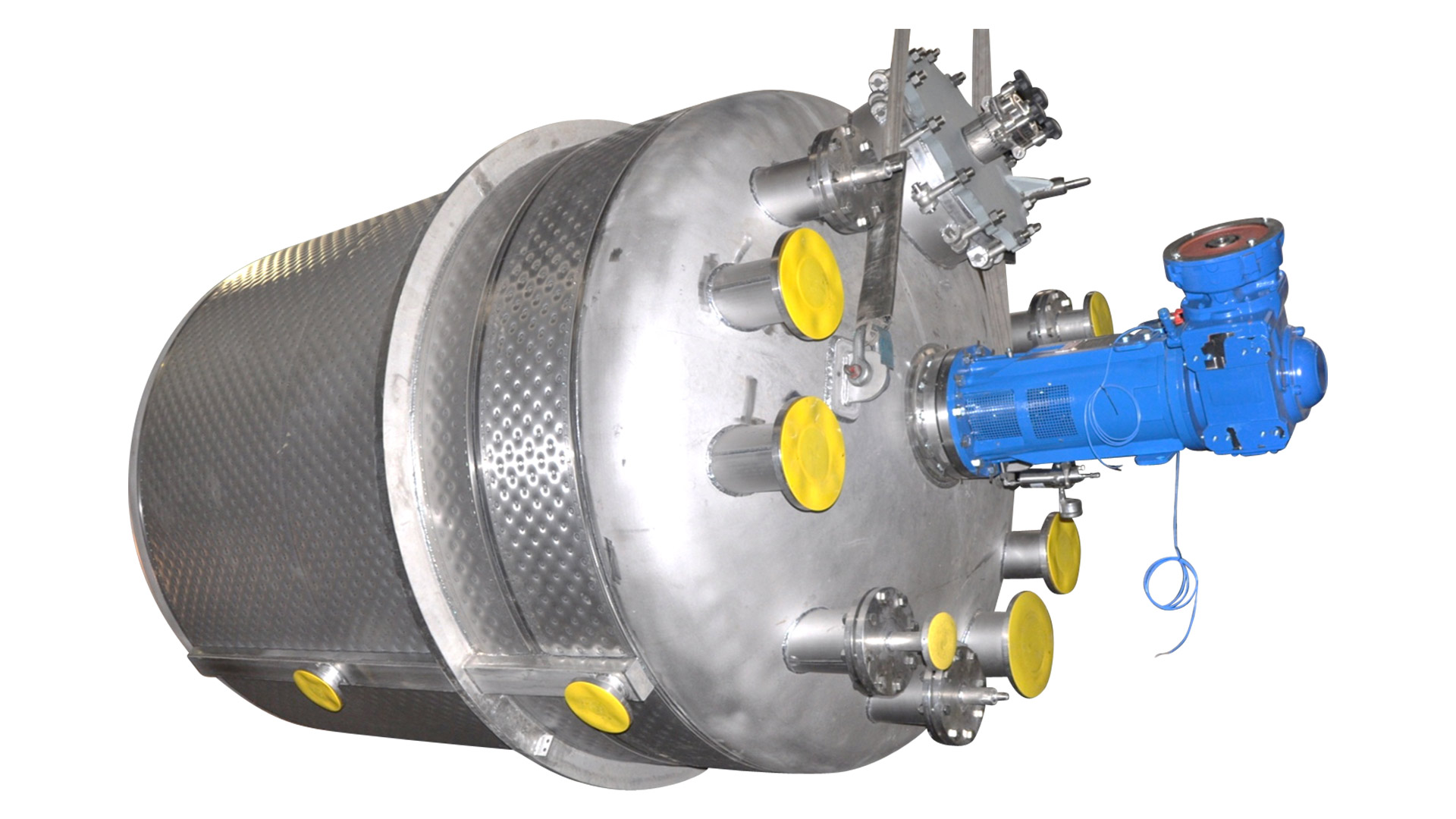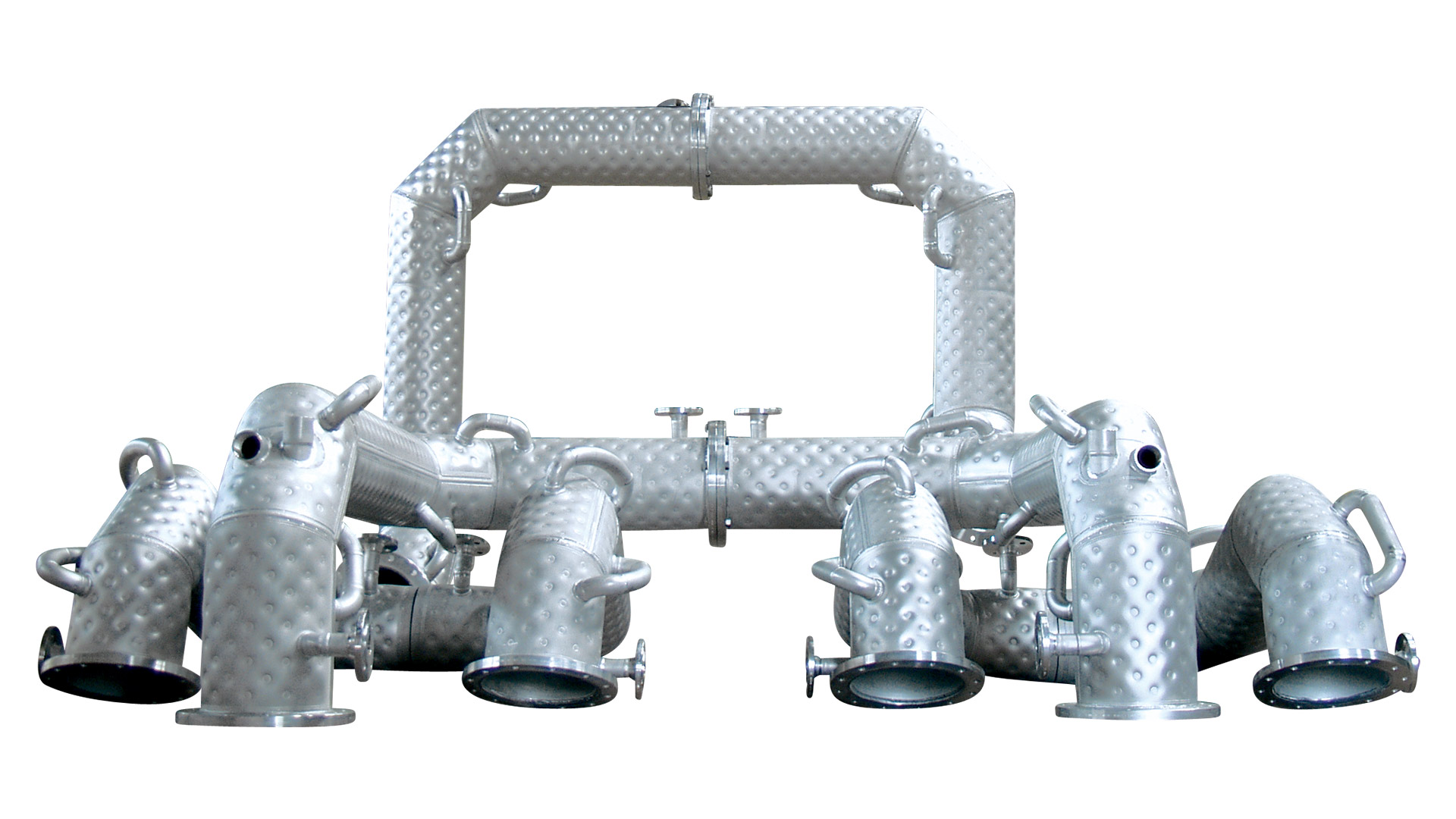WTP-Baffles
Usually, baffles are installed on the inner walls of agitator vessels to achieve homogeneous mixing. Traditionally,
they consist of thick plates, which absorb the torque value of the agitator as they are sturdily attached to the inside
of the vessel wall. Conventionally, coils are installed in case the agitator vessel requires heating or cooling.
WTP-Baffles meet the requirement of both the mechanical mixing and the additional heating of the product. In an
agitator vessel, LOB installed 16 WTP-Baffles with an additional heating area of about 20 m². Via two ring pipes,
these baffles are fed with coolant. Tilting the baffles in relation to the agitator rotation optimizes the heat transfer
and mixing. This is a way to apply additional heat to the product. The surfaces are polished to avoid sticking of the
agitated material. Round metal bars serve as distance holders for the offset mounted WTP-Baffles and also absorb
the agitator torque.
Another benefit of using WTP-Baffles rather than pipe coils inside the vessel is the capability of quickly changing
between heating and cooling due to the low amount of needed heat transfer media. Large amounts of coolants must
be used to cool down tube coils after steam-heating to achieve nearly the same heat transfers
As a flow pattern in an agitator vessel, it is known that product rolls are formed horizontally and lengthwise to the
baffles. For the heat transfer this means that the material moves in lengthwise parallel and in vertical direction when
it comes into contact with the WTP-Baffles. Tube bundles expose less heat exchange surface than WTP-Baffles as
there are gaps between the pipes which are not effectively passed through by the horizontal product roll.






